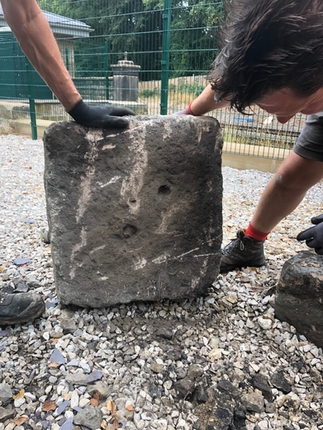Turning over old stones to reveal new information
- Admin

- Jan 29, 2023
- 1 min read
Used up until the late 1830s the stone 'sleeper' blocks at Wingfield Station were later replaced with long, wooden ones. This was because the individual stones moved and changed the gauge as locos got heavier, causing derailment.
As one of the earliest stations we should, perhaps, not be surprised to find these at Wingfield as the very early rails would have been laid on them.
On some of the stones there are diagonal holes, which shows the cast iron 'chair' (used to hold the rails in position) were fitted diagonally rather than square. This was because the stones were set like this, or 'diamond-wise'; the corners almost touching to form a practically continuous line. This made the four sides of each block more easily accessible for ballasting and maintenance.
Many thanks to DHBT supporter, Louis, for his continued research and interest in the project.
















